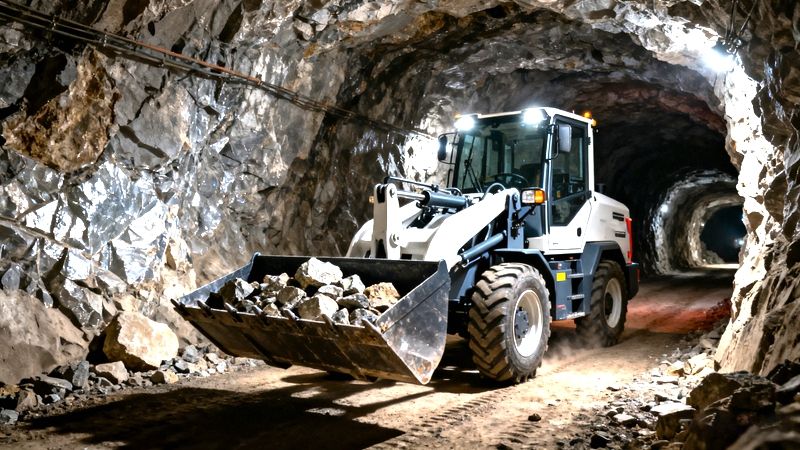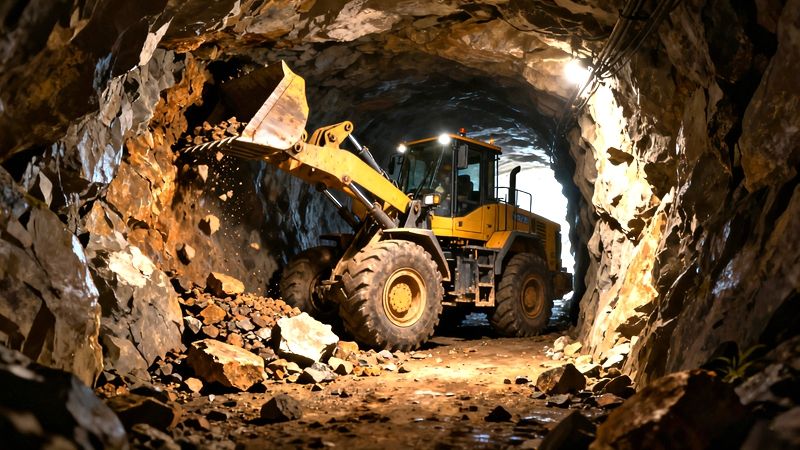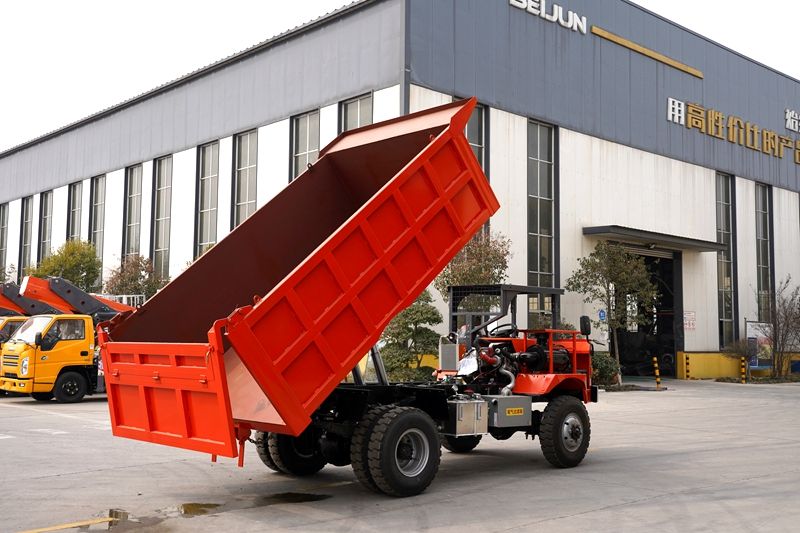New Compact Wheel Loader for Underground Mines Debuts: Adapting to Coordinated Operations with Mini Front Loaders and Underground Rock Trucks
1 Narrow Tunnels Spur Demand for Practical Compact Loaders
Mines with narrow tunnels, such as the San Martín Silver Mine in Zacatecas, Mexico, and the Lanping Zinc Mine in Yunnan, China, have long struggled with the bulkiness of traditional loaders. Most tunnels in these mines are only 1.8 meters wide. Old loaders not only have difficulty turning but also their welded frames are prone to deformation due to friction against tunnel walls. To solve this problem, manufacturers have launched a compact wheel loader specifically designed for narrow underground tunnels. Its core features include an integral ordinary manganese steel frame fixed by cold-riveting technology, and buckets adopting a combined configuration of low-alloy high-strength wear-resistant steel and high manganese steel. While ensuring a compact size, it also maintains structural strength. When used in conjunction with mini front loaders and underground rock trucks, it can form an efficient loading and transportation chain, completely changing the low-efficiency situation of narrow tunnel operations.
2 Practical Configurations Make the Compact Loader a Narrow Tunnel Powerhouse
This compact wheel loader for underground mines has a width of only 1.7 meters and a height of 2.1 meters, perfectly fitting narrow tunnels. Its core advantage lies in the integral ordinary manganese steel frame constructed with cold-riveting technology. The frame is cut and formed from a single block of ordinary manganese steel with a 10% manganese content, and key joints are fixed by cold-riveting technology. This not only reduces the frame weight by 15% compared with traditional welded frames but also avoids the problem of weld cracking in welded frames. During tests at the San Rosa Silver Mine, the loader turned frequently and rubbed against tunnel walls. After 6 months of continuous operation, the frame showed no deformation, and its stability was far superior to that of old welded models.
The loader’s 1.1-cubic-meter bucket adopts a combined design of "NM360 low-alloy high-strength wear-resistant steel bucket body + Mn13 high manganese steel bucket teeth", with additional high manganese steel wear-resistant strips welded along the bucket edges. In field operations, it can load 3 tons of ore per cycle and transport 50 tons of ore per 8-hour shift. In contrast, the old compact loader used by the mine previously could only transport 30 tons of ore in the same period, and its ordinary steel bucket needed to be fully replaced every 2 months. The new model only requires replacing the Mn13 high manganese steel bucket teeth every 6 months, and the bucket body can last up to 10 months.
Safety protection has also been upgraded based on basic materials. The cab is reinforced with an ordinary manganese steel frame and covered with NM400 low-alloy high-strength wear-resistant steel guards, which can effectively resist falling gravel in tunnels. Miners at the San Rosa Silver Mine reported that the cab of the new loader is not only sturdy but also has better airtightness, which can block ore dust. Cases of respiratory discomfort after long working hours have been significantly reduced, and operational comfort has been greatly improved.
In addition, the loader is equipped with a small-displacement diesel engine, featuring a simple structure and low failure rate. Its fuel consumption is 25% lower than that of similar models. After the Lanping Zinc Mine adopted this loader, its monthly fuel costs were reduced by $3,000. Routine maintenance of the engine, such as oil changes and filter cleaning, can be completed by local maintenance workers without relying on technical support from manufacturers.
3 Coordination with Mini Front Loaders Improves Cleaning Efficiency
The effective coordination between the compact wheel loader for underground mines and mini front loaders lies in the compatibility of their basic structures. Mini front loaders, only 1.2 meters wide, are ideal for cleaning scattered ore in tunnel corners and gaps between support beams. They also adopt simplified small ordinary manganese steel frames fixed by cold-riveting technology, with buckets using a small-sized combination of NM300 low-alloy bodies and Mn13 high manganese steel teeth. This ensures consistent maintenance logic with the compact wheel loader.
At the San Rosa Silver Mine, mini front loaders first collect scattered ore and concentrate it at transfer points, and then the compact wheel loader carries out bulk loading. Due to the unified specifications of manganese steel series components in both types of equipment, maintenance tools and some spare parts can be shared. High manganese steel bucket teeth, ordinary manganese steel gaskets, rivets, and other consumables in the mine’s inventory can be applied to both types of equipment simultaneously. This increases maintenance efficiency by 40% and reduces inventory costs by 20%. This coordinated model, which requires no complex coordination, shortens the overall loading time by 35%.
4 Efficient Transportation Combination Adapting to Underground Rock Trucks
When designing this compact wheel loader for underground mines, the tilt angle of the low-alloy bucket was optimized to match the carriage size of underground rock trucks. The 45-degree tilt angle allows ore to fall accurately into the truck carriage, reducing ore spillage by 60%. This not only avoids ore waste but also reduces the need for post-spill cleaning work.
More importantly, their structural strengths are compatible. Underground rock trucks are also equipped with integral ordinary manganese steel carriages and cold-riveted frames, which match the load-bearing capacity of the loader and enable continuous loading operations. By adjusting the operational process, the Lanping Zinc Mine has realized alternating operations between loaders and rock trucks. Relying on their sturdy manganese steel structures, the number of transportation trips per shift has increased from 8 to 11, with an additional 200 tons of ore transported every week. Both types of equipment are less likely to break down during high-intensity operations, significantly reducing operational interruptions.
5 A Highly Suitable Choice for Small Underground Mines
Small underground mines have limited funds and a shortage of technical personnel, and this compact wheel loader perfectly meets their needs. After a small gold mine in Peru with only 15 workers purchased this loader, there was no need to recruit additional technical personnel. Existing workers could operate and maintain it after simple training. The low-alloy bucket, high manganese steel bucket teeth, and ordinary manganese steel frame have an extremely low failure rate. The mine’s monthly ore output increased by 30%, helping it successfully secure a new supply contract.
Manufacturers also provide flexible customization services. They can adjust the size of low-alloy buckets (ranging from 0.8 to 1.3 cubic meters) according to mine needs. For bucket teeth, standard or hardened Mn13 high manganese steel can be selected based on ore hardness, while retaining the core cold-riveted frame structure. Whether it is a small gold mine with narrow shafts or a limestone mine with relatively wider tunnels, a suitable model can be found, making it an essential piece of equipment for small underground mines.






